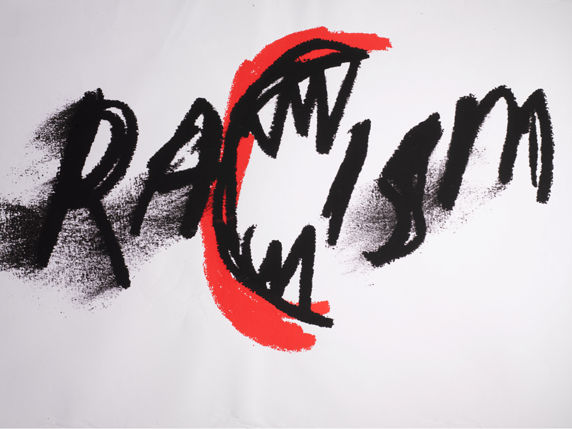
James Victore: Don't Be A Design Zombie
-
James Victore is a man of action. He believes that knowing about jazz and wine and auto-racing can make you a better designer. That graphic design is about experiences and stories and using your hands. That the best designs punch you in the gut – or, at the very least, stop you in your tracks.
When I visit his Williamsburg work/live studio, Victore is charming and humble, describing himself as still being “the unknown designer at age 50.” This is, of course, entirely untrue. (Aside from the fact that he’s not yet turned 50.) While you may not know the man, you very likely know the work. Once you see a Victore image – many of which live in the collection at MoMA – you rarely forget it.

25 Insights on Becoming a Better Writer
-
When George Plimpton asked Ernest Hemingway what the best training for an aspiring writer would be in a 1954 interview, Hem replied, "Let’s say that he should go out and hang himself because he finds that writing well is impossibly difficult. Then he should be cut down without mercy and forced by his own self to write as well as he can for the rest of his life. At least he will have the story of the hanging to commence with."
Today, writing well is more important than ever. Far from being the province of a select few as it was in Hemingway’s day, writing is a daily occupation for all of us -- in email, on blogs, and through social media. It is also a primary means for documenting, communicating, and refining our ideas. As essayist, programmer, and investor Paul Graham has written, "Writing doesn't just communicate ideas; it generates them. If you're bad at writing and don't like to do it, you'll miss out on most of the ideas writing would have generated."

Are You Ready To Be Lucky?
-
We're at an interesting crossroads in terms of careers. We still want them, but they don't exist anymore. In the US, the typical job tenure is now 4 years, with most workers cycling through about 11 jobs in their lifetime.
If the 20th-century career was a ladder that we climbed from one predictable rung to the next, the 21st-century career is more like a broad rock face that we are all free climbing. There's no defined route, and we must use our own ingenuity, training, and strength to rise to the top. We must make our own luck.
We're at an interesting crossroads in terms of careers. We still want them, but they don't exist anymore. In the US, the typical job tenure is now 4 years, with most workers cycling through about 11 jobs in their lifetime.
If the 20th-century career was a ladder that we climbed from one predictable rung to the next, the 21st-century career is more like a broad rock face that we are all free climbing. There's no defined route, and we must use our own ingenuity, training, and strength to rise to the top. We must make our own luck.
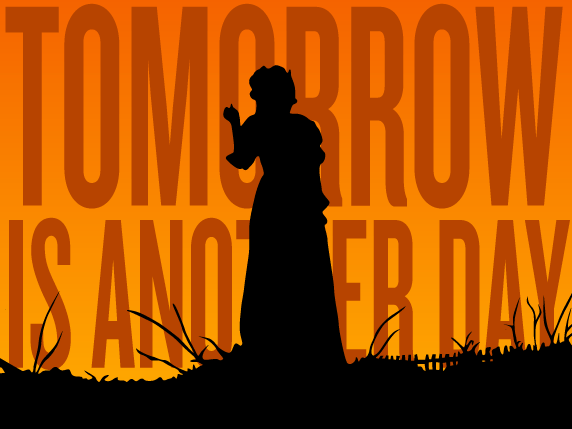
Can't Start, Won't Start: Tricks for Overcoming Procrastination
-
When it comes to glamorous procrastinators, Scarlett O'Hara is one of our most enduring icons. A quick sampling of her lines inGone With the Wind yields: "I can't think about that right now. If I do, I'll go crazy." And, "I'll think about it tomorrow, when I can stand it." And, of course, her famous closing line: "After all... tomorrow is another day!"
When it comes to glamorous procrastinators, Scarlett O'Hara is one of our most enduring icons. A quick sampling of her lines inGone With the Wind yields: "I can't think about that right now. If I do, I'll go crazy." And, "I'll think about it tomorrow, when I can stand it." And, of course, her famous closing line: "After all... tomorrow is another day!"
It turns out that O'Hara was a bit of a trailblazer in the "I'll-do-it-tomorrow" category. In a landmark study of procrastination completed just a few years ago the news was not good. Our collective habit of putting things off is getting worse. While in the 1970s, only about 5% of Americans admitted to regularly procrastinating, today it's a whopping 26%.
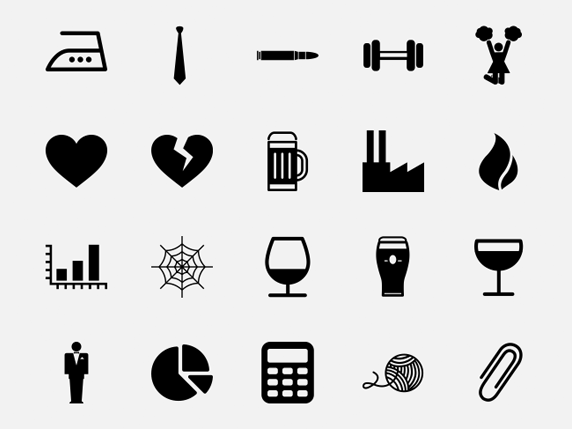
The Noun Project: From Sketchbook To Startup
-
The best ideas, like the best song lyrics, feel familiar from the moment we encounter them. (We say, "I should have thought of that!") The Noun Project, a growing library of free, downloadable icons symbolizing objects and concepts, feels like one of those ideas. So simple it seems obvious, and so useful you can’t believe it didn’t exist before.
Founded by the husband-and-wife team of Edward Boatman and Sofya Polyakov, along with designer Scott Thomas, The Noun Project launched in 2010 with a catalog of a few hundred icons and has since grown by leaps and bounds. New symbols are submitted daily by designers around the world, and the Noun Project team recently crowdsourced the translation of its library into 25 languages.

Grit Is More Important Than Talent
-
In the late '60s, Stanford psychologist Walter Mischel performed a now-iconic experiment called the Marshmallow Test, which analyzed the ability of four year olds to exhibit "delayed gratification." Here's what happened: Each child was brought into the room and sat down at a table with a delicious treat on it (maybe a marshmallow, maybe a donut). The scientists told the children that they could have a treat now, or, if they waited 15 minutes, they could have two treats.
All of the children wanted to wait. (Who doesn't want more treats?) But many couldn't. After just a few minutes or less, their resolve would break down and they would eat the marshmallow. But some kids were better at delaying gratification: They were able to hold out for the full 15 minutes.
When the researchers subsequently checked in on these same children in high school, it turned out that those with more self-control -- that is, those who held out for 15 minutes -- were better behaved, less prone to addiction, and scored higher on the SAT.
When the researchers subsequently checked in on these same children in high school, it turned out that those with more self-control -- that is, those who held out for 15 minutes -- were better behaved, less prone to addiction, and scored higher on the SAT.

Christoph Niemann: Short Deadlines Make You Think Straight
-
Christoph Niemann has an impressive knack for distilling complex concepts into images that are as striking as they are simple. His iconic illustrations – recognizable for their crisp execution and undeniable wit – regularly appear in the pages of the New Yorker, WIRED, and the New York Times Book Review. Niemann, who’s admittedly “addicted to producing,” has also authored two children’s books and regularly creates clever pictorial narratives for his Abstract City blog, which tackles illustration from a medium-centric perspective (i.e. Legos, coffee, woven paper).
Formerly a New Yorker, Niemann now lives with his wife and three sons in Berlin, where he has the advantage of a 6-hour headstart on his mostly US-based clientele – not to mention easy access to a delicious morning bowl of milchkaffee. We chatted with Niemann by phone about how deadlines can be a good thing (especially when it comes to managing clients) and why open-ended assignments send him into fits of utter despair.
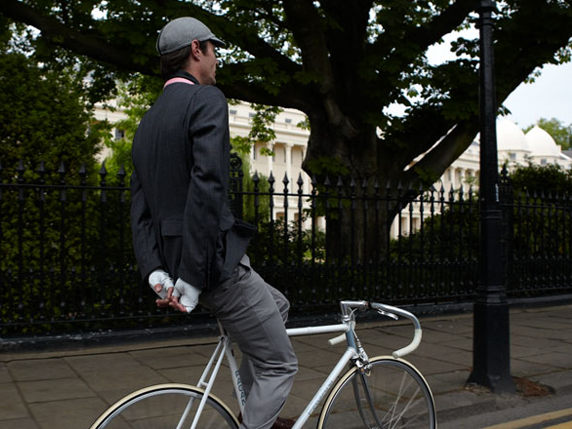
Simon Mottram: On Passion, Obsession & Why Your Brand Should Take Sides
-
Road racing is a grueling sport that demands intense focus, strategic thinking, and a very, very high tolerance for pain in pursuit of the greater glory. It's never been a sport for the faint of heart, and - until recently - it hasn't been for the faint of style. (We've all seen that guy clunking around the coffeeshop in an eye-blistering neon jersey with 23 logos on it.) But in 2004, the UK-based performance roadwear company Rapha changed all that. They brought high style to cycling.
Since their launch over seven years ago, Rapha has evolved into a vibrant ecosystem for road riders around the world. Beyond their 100+ product line of high-performance clothing and gear sold online, the brand encompasses a world-class cycling team, a super-cross racing series, a bi-monthly cycling magazine, a gallery and shop in San Francisco, and multiple blogs covering the sport.
Behind it all is road racing enthusiast Simon Mottram. Prior to launching Rapha, Mottram worked for 15 years as a marketing and branding consultant, collaborating primarily with luxury brands. And the experience shows: Since day one, Rapha's branding has been executed with flawless panache.
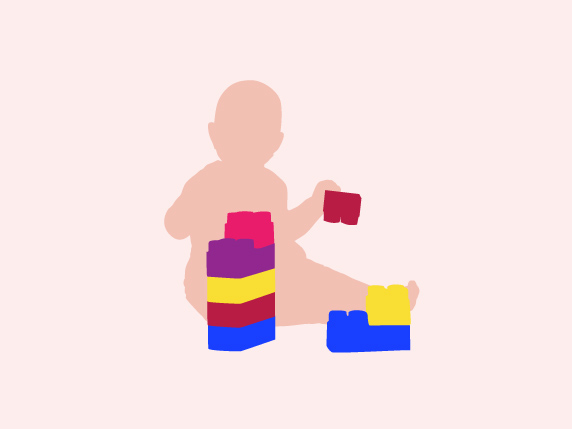
What We Can Learn from Babies: Experimentation, Failure & Creative Genius
-
Lately, I’ve been thinking a lot about babies – and how the child’s ability to explore, experiment, and make mistakes is an essential part of the creative process. When we are at the height of our creative productivity or “flow” state, our brainwaves reflect a deeply meditative, or “theta,” pattern.
As babies and pre-adolescent children, this theta state –characterized by the ability to shut out the world and deeply concentrate and connect with a task at hand – is the norm, enabling children to lose hours playing in completely imaginary worlds. Yet, for adults theta brainwaves are more difficult to access, usually coming only in half-waking states as we slip into dreams.
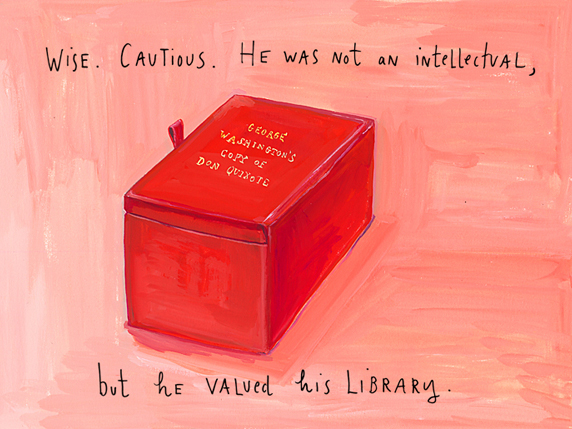
Maira Kalman: The Pursuit of Happiness
-
Maira Kalman’s illustrations give the impression of someone as alive to the wonders and amusements of the world as a small child. It’s no surprise then that she’s written and illustrated 12 children’s books. But you needn’t be a parent to know her work. Kalman has produced two much-loved visual blogs for the New York Times, illustrated many a New Yorker cover, designed the blue sky umbrella sold by the Museum of Modern Art, and illustrated Strunk & White’s classic text, The Elements of Style.
Kalman describes her approach as journalistic, and it’s easy to see a natural inquisitiveness underlying her work. One gets the impression that she is constantly roaming the streets for visual stimulation, chatting up a waitress at an out-of-the-way diner, exploring a new installation at a library or museum. When I call her to chat, she is true to form: Kalman is visiting the Neue Galerie on the Upper East Side, where she tucks into a stairwell to speak about her transition (or expansion) from writer to artist, believing in the worth of your work, and finding your calling in the most seemingly insignificant pleasures.

Dialectical Dreamer: Wim Delvoye
-
Wim Delvoye is a trickster, a storyteller, a problem solver, a systems maker, and a businessman -- but it's only through the guise of an "artist" that he can embody all of these identities at once. And if you asked Delvoye, the artist is coming of age. "We have seen the collector as the star before, the gallerist as the star before, the curator as the star, the writer as the star, and now I'm expecting -- we have seen many signs on the wall -- that the artist will finally be the star."
Born in 1965 in Wervik, Belgium, Wim Delvoye has been exhibited at the Venice Biennale in Italy, Documenta IX in Germany, the Centre Georges Pompidou in Paris, and the New Museum of Contemporary Art in New York. He has generated an impressive and wide-ranging oeuvre, with works including anal kisses (blooming, lipsticked prints of women's rectums); wooden birdhouses kitted out in studded S&M inspired harnesses; football goals with stained glass depictions of everyday life and religious figures; drawings of Disney characters portrayed in crucifixion scenes; sculptures of construction vehicles rendered in ornate, laser-cut steel; live pigs tattooed with Louis Vuitton logos; and, his most famous project, Cloaca, a series of incredibly complex gastronomic machines that process food and excrete true-to-life feces.
